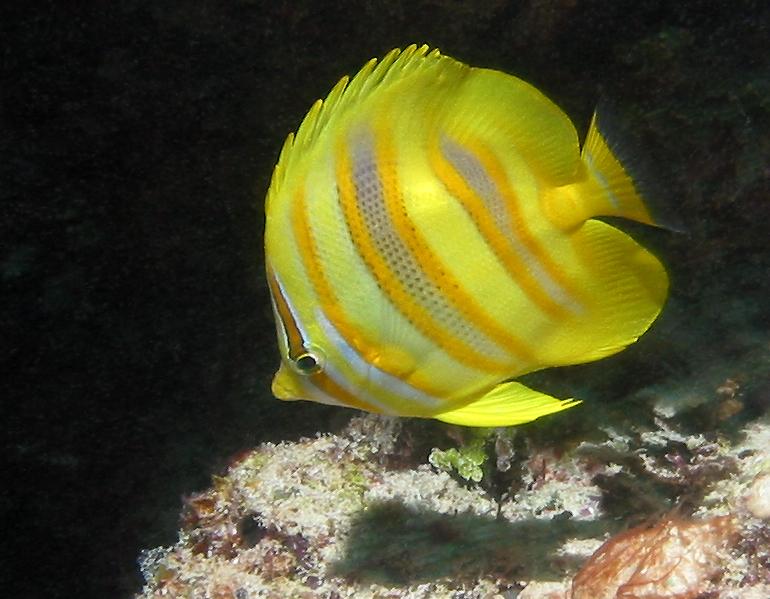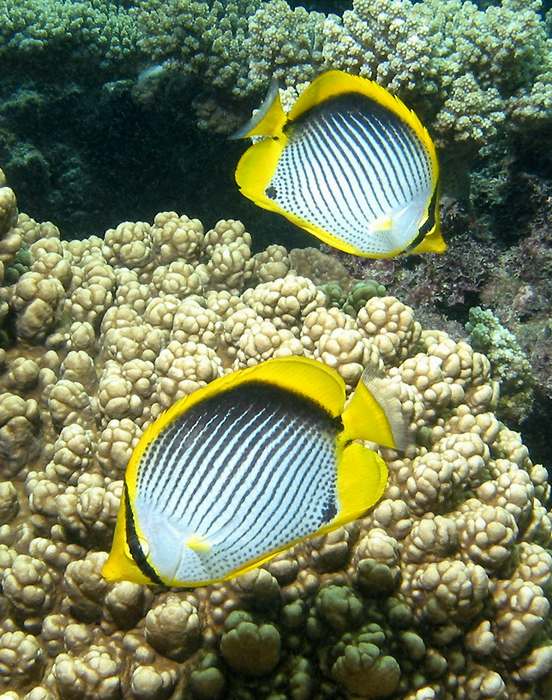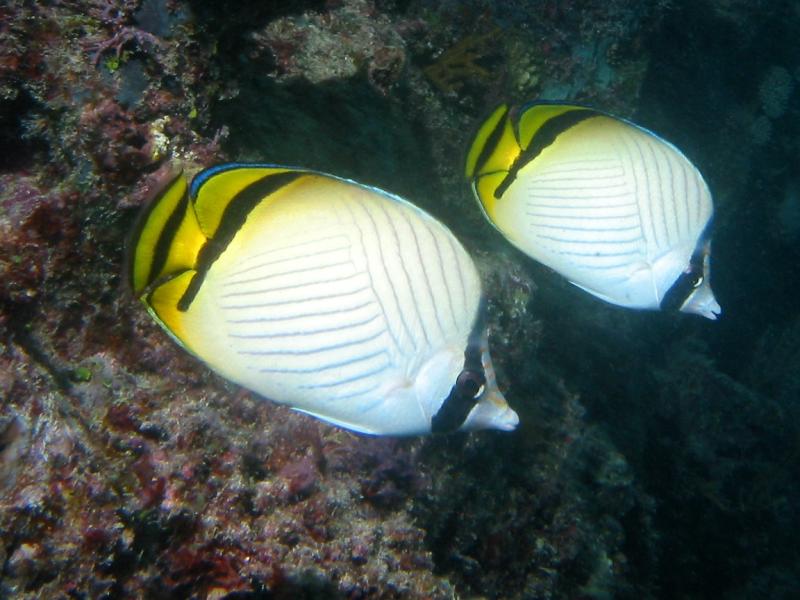Great Barrier Reef Butterflyfishes
|
There are dozens and dozens of different species of butterflyfish, spread right around the globe wherever there are coral reefs. A few species are local to particular areas, but most are quite widely spread, such as these melon butterflyfish, which I've also seen in Hawaii. Some butterflyfish have several common names, depending on what part of the world you're in, but generally each species has only one Latin name, which you can find by hovering the cursor over the photo. However, in the case of these melon butterflyfish, there's some debate in the scientific community about whether those found in the Pacific are a distinct species called Chaetodon lunulatus, or just a sub-species of Chaetodon trifasciatus called Chaetodon trifasciatus lunulatus. But I won't bore you with the details! |
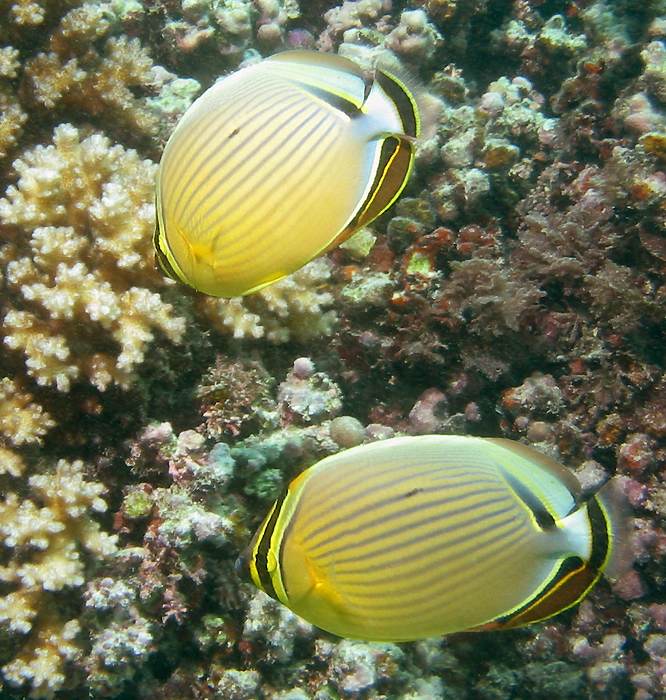
|
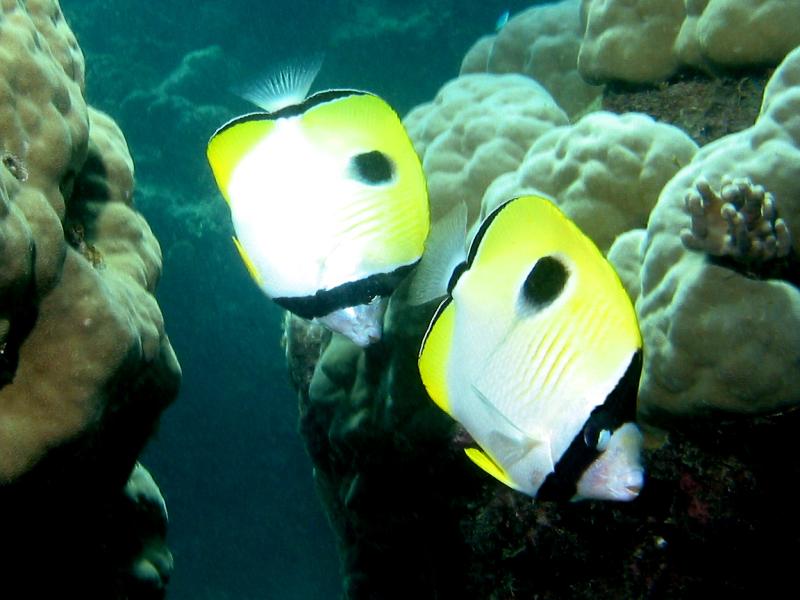 |
Another characteristic, which you might already have noticed from these photos, is that they mostly travel in pairs, a male and a female. For me this is another of their endearing qualities, and it certainly makes for some nice photos. These are teardrop butterflyfish, named for the large black teardrop shaped marking on their back. |
|
There are other characteristics common to all of them, such as being very thin, and having small mouths which they use to eat coral polyps or algae growing on the reef. This is an ornate butterflyfish. |
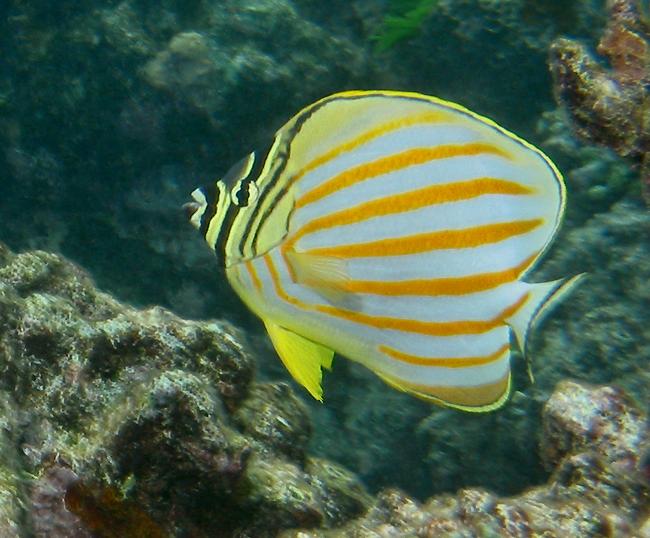 |
|
Here's one I haven't seen before, called a latticed butterflyfish because of the lattice of markings on its sides. It's said to be rather uncommon. |
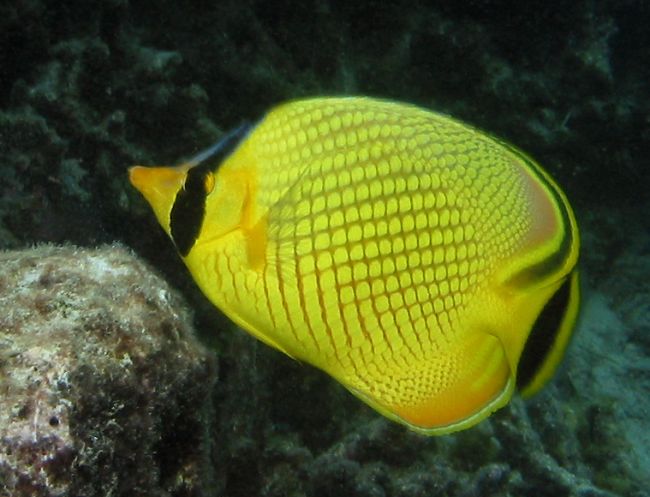 |
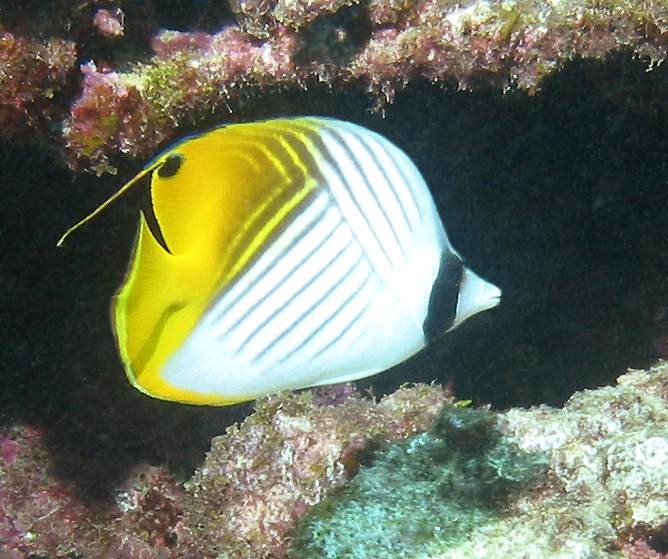 |
The threadfin butterflyfish is named for its long trailing thread, a feature which also accounts for its other common name of "whip butterflyfish". |
|
The blue-blotch or blue-spot butterflyfish is one of the smallest species in this family; it earns its name from the gray/blue marking on its side. Its small size might be a reason why it sometimes acts as a cleaner fish, like the small cleaner wrasses, which also often have blue lines along their sides. |
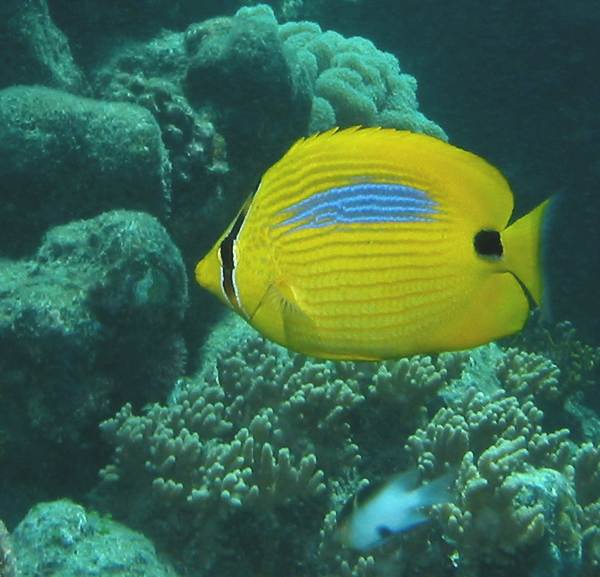
|
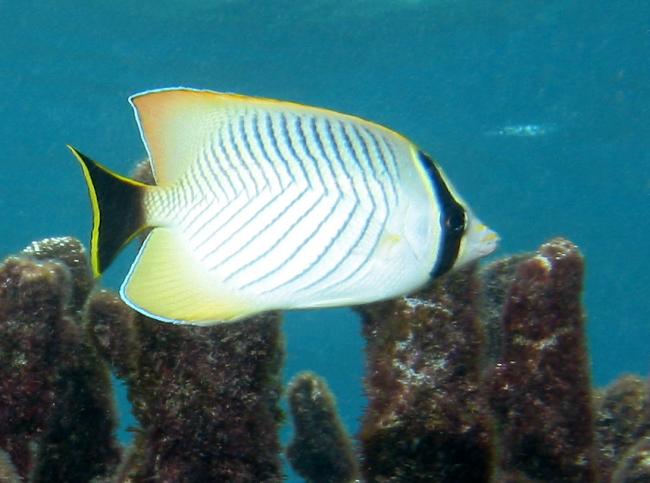 |
This was my first trip using a Canon G2 digital camera in an underwater housing, so some of the photos didn't turn out too sharp, like this chevron butterflyfish. However, I'm trying to show you a photo of all 15 species of butterflyfish I photographed on this trip, so here it is! |
|
This is one of my favourites, a sunset butterflyfish. I only got two photos of this variety the whole trip, and it took me quite a long time to track down its name. The only reason I got this shot was because this fish didn't want to move, because it was at a cleaning station - you can see a very small cleaner wrasse alongside it. This photo shows very nicely how thin butterflyfish are; it probably helps them to avoid being eaten, since an attacker would either need a very large mouth, or would have to attack them from directly above or directly below. Although it does have a bar through its eye, you can see that this type runs counter to the general butterflyfish "rule" of having a black bar. |
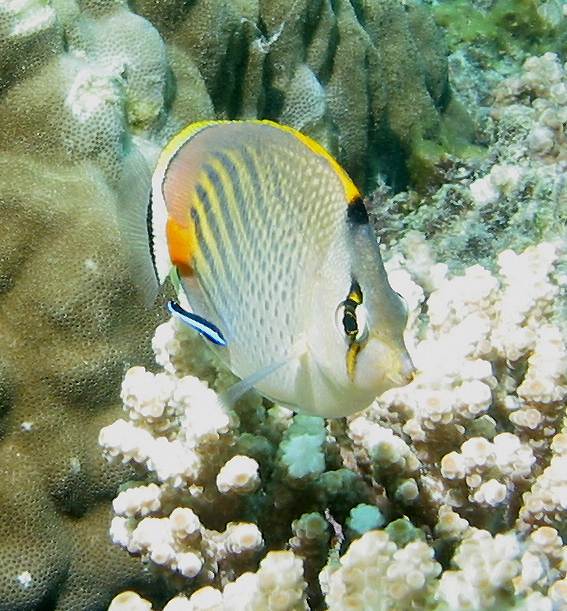 |
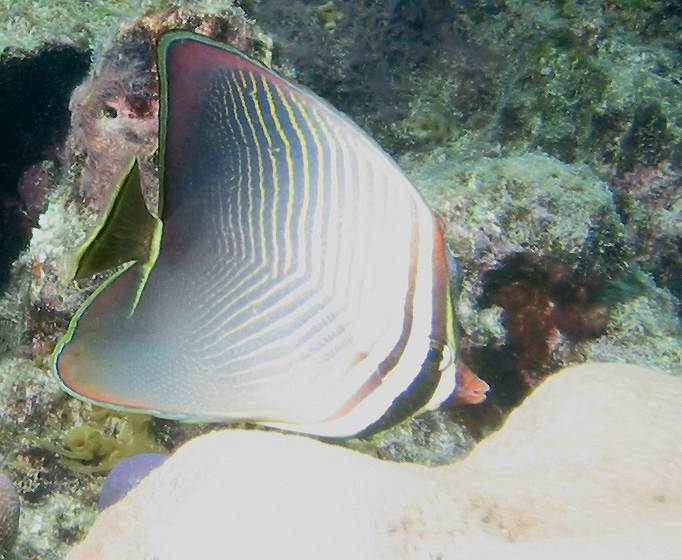 |
Here's another photo which isn't too good. I originally identified this as an eastern triangular butterflyfish, but I'm now starting to think that was a mistake. |
|
Because of the black mark on the back of this species, it's called a saddleback or saddled butterflyfish. Just a thought - do seahorses ride on saddleback butterflyfish? |
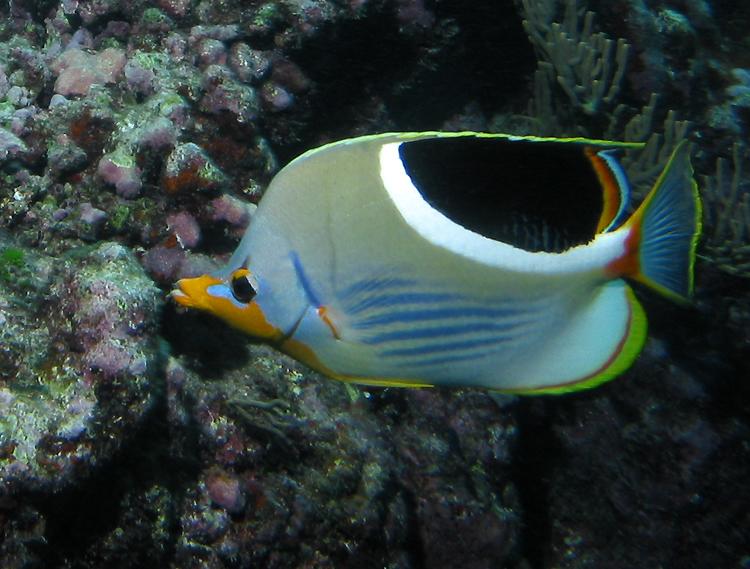 |
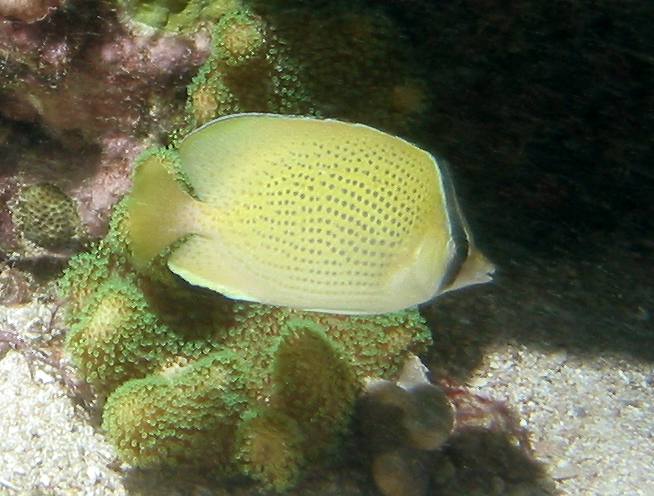 |
This citron butterflyfish was even more difficult to identify than the sunset butterflyfish. I didn't work out its name until I happened to go to the page on my website about a trip to the Great Barrier Reef that I did seven years ago, and I realized that I'd photographed it once before! It's another small butterflyfish, even a little smaller than the blue-blotch. |
|
We end with another photo which is available as wallpaper, this time a Pacific double-saddle butterflyfish, named after the two dark markings on its side. |
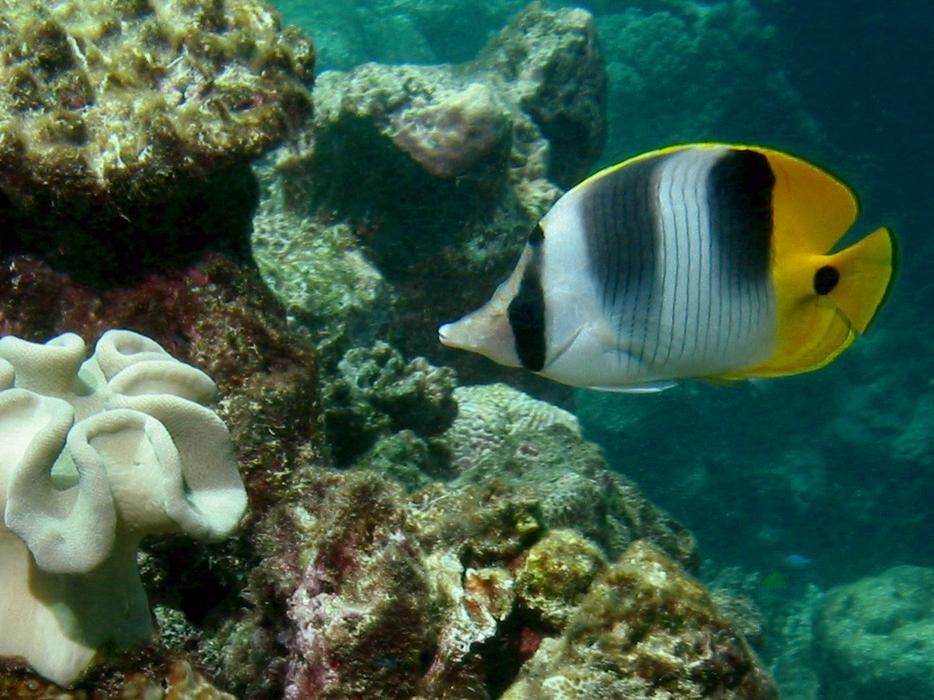
|
